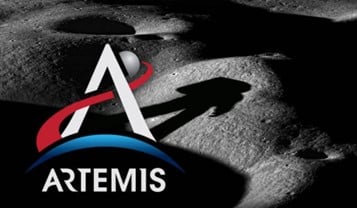As an engineer in the rotating machinery world, it is my job to design things that work for a very long time. To help ensure this, we have evolved the best analytical tools to calculate the stresses and deflection of the parts we have so carefully designed. But sometimes, we lose track of what matters. We know that material strength, weight, stiffness, toughness, thermal conductivity and thermal growth all matter. They are in a material database, so they must.
But do they always matter, and how much? For example, recently, we were looking at an impeller design that is pushing the limits. We needed to reduce the stress. The first thought was to reduce the mass, so just undercut the disk and trim away all the blue color parts in the stress plots and we are done. But it was not enough. So, then we look at using a lighter material, like aluminum, because it has about 1/3 the weight of steel. But wait, aluminum has a modulus of elasticity (E) of about 1/3 that of steel. Does the reduced modulus impact the stress? You would think, as a highly experienced engineer, I would know the answer off the top of my head. But honestly, I had to go back to the books to look it up. One would think that stiffer is better and stronger, right? After all, alloy steel is 3 times stiffer than aluminum, and stronger too. But, as every college professor reminds their students, “don’t forget the basics”. It turns out, stiffness doesn’t affect the stress of the impeller. Impeller stress is a function of speed and material weight. The stiffness only affects the deflection. The equations for stress of a rotating disk are below. See, there is no E anywhere. Using this simple equation, the impeller can be modeled as a group of disks, as seen below.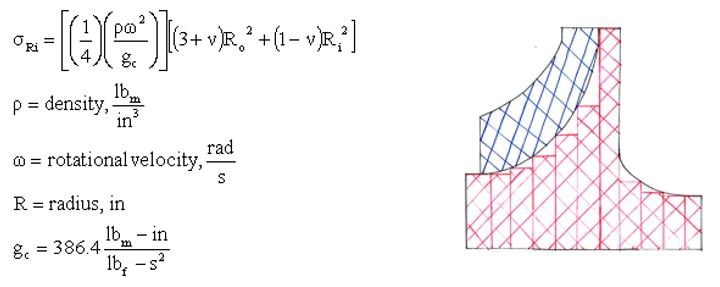
E is the ratio of the stress to strain. Stiffness affects how much the part deflects under a given stress. In the case of an impeller, there are certain regions where the part will deflect more under the centrifugal loads. The blade, for example, is attached to the disk, like a cantilevered beam. If we look at a cantilevered beam equation, we will see that the stiffness does not affect the stresses either, just the deflection.
It’s hard not be a little skeptical. Should the increased blade bending affect the stress at the attachment? One would think yes. If you are really curious, you will just have to run a few cases and see.
It’s also noteworthy that radius is a square function of the stress. Move that mass further out and the spinning mass pulls at the bore even more.
If stress is only driven by speed and mass, then why not always use the lightest material? Well, it’s because the strength matters too. Stress must be met with strength, which is also a good motto in everyday life too! So, if we look at strength, relative to mass, we create a parameter we call specific strength. However, impellers are not as simple as a disk, so we take the disk equation and apply a form factor to it, to generally reflect the differences of a radial impeller shape, relative to a disk. The result is that we create a specific strength type of parameter.
If we consider a boreless wheel, where Ri=0, we can calculate the tip speed at which the stress meets the strength of the material. Below is a very helpful type of chart for those of us two strokes short of running an analysis program.
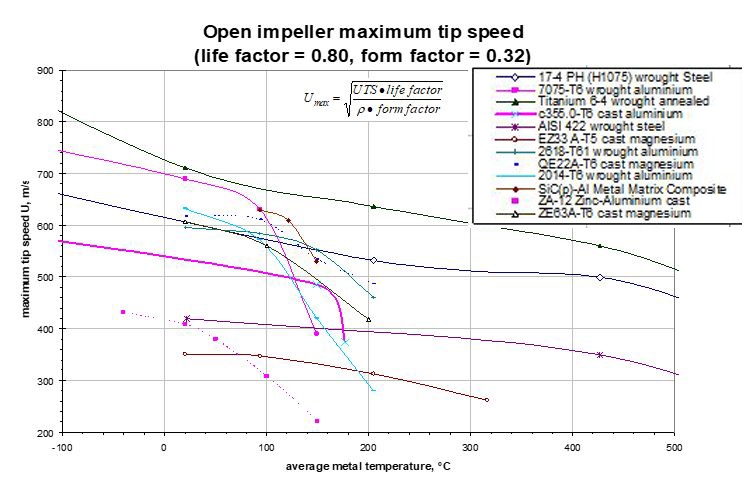
The beauty of this chart is that we can plot the tip speed against the strength, as the strength varies with temperature. It shows us why we cannot make everything out of aluminum. Aluminum is like butter when it gets hot. This chart is not very conservative, as it is based on UTS times a life factor, rather than a yield strength, and it’s based upon a boreless wheel, but it shows the differences of the materials.
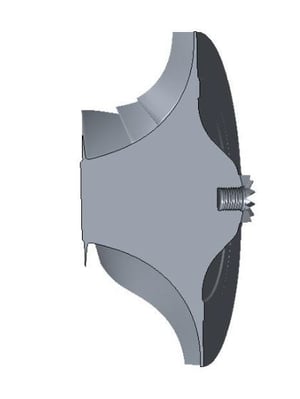
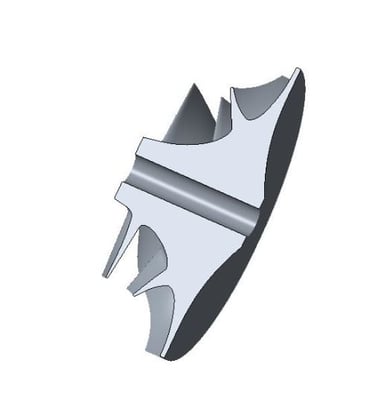
Stiffness does matter when it comes to deflections. The bore growth and disk deflections will be greater for a wheel with the same stress and reduced stiffness. For impellers, the best cure is to eliminate the bore. Rather than running a shaft through the impeller, one can attach to the back of the impeller with a face drive such as a Hirth or Curvic type. But that only works for a single-stage machine. If you have a bore in the impeller, then the design work begins anew, and the stiffness will definitely matter.








